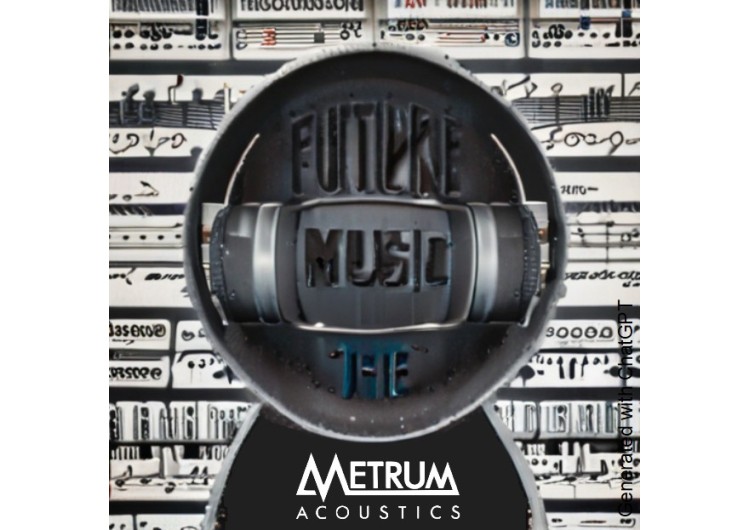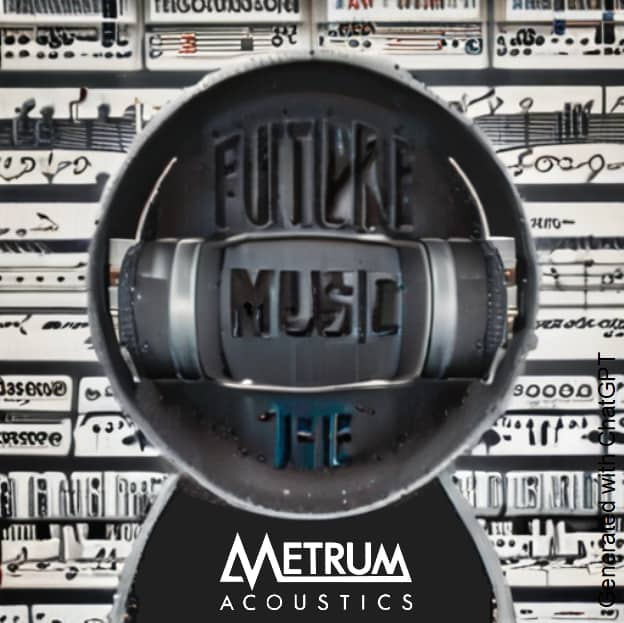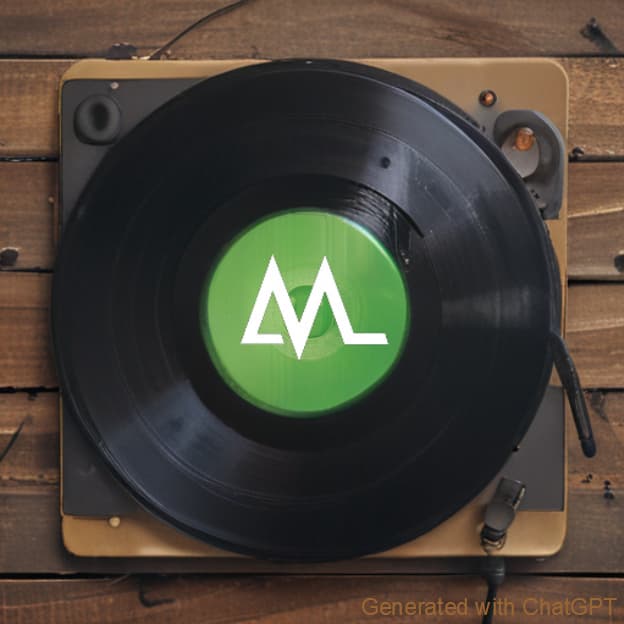Metrum Newsletter - March 2024

Our crystal ball tells us the future of Music is...

Metrum Newsletter
Welcome to our newsletter.
It's a 5 minute read, gives a hint at what's been happening and gives an idea of the Musical future.
Newsletter

Spring is in the air! Euh.. well almost (and only if you are in the Northern hemisphere). Hang in there while temperatures and lighting conditions are getting better. For those readers in the Southern hemisphere get ready as... Winter is coming!
On to the new frontier and the topic of this edition of our newsletter:
The Future of Music
We have customers that take their precious 12-inch black discs from carefully designed covers, with room for album art to spare. Pictures of the band in the recording studio, more info on the band and the message they want to convey with this album are printed on the sleeve. The record is put on the stable platter and the stylus placed above the starting groove. Enjoying the smell of vinyl, the bump when the needle hits the record, the soft crackles and pops that introduce the start of every ('unclean') vinyl give a sense of the volume the amplifier is set to and complete the ritual just before the Music starts. The needle that finds the groove and makes Music through the chain of stylus, cartridge, phono stage, pre-amplifier, interlinks, power amplifiers and speakers possible... Digital might never be able to replace that part of the vinyl experience. It is a deliberate action, you need to do something before you are treated to good Music. The vinyl ritual helps to take a moment for yourself, adds nostalgia to everyday life and destresses audiophiles like nothing else. In this newsletter, we will briefly 'touch' on different viewpoints and work towards what the future of music is.
Vinyl
 Vinyl dates back to the 1940s and is predated by the delicate bakelite gramophone, shellac records and wax rolls, has a frequency response of around 30 to 16000 Hz and a signal-to-noise ratio of 60 dB. The channel separation reaches 35dB in good conditions with good-quality pressings. This means that the Left and Right channels can differ by 35dB, which translates to a factor of 56. With the human hearing system being able to register a dynamic range of about 130dB (a factor 3.000.000) and the sensitivity to register displacements of the eardrum with the size of less than a hydrogen atom, this number pales. Yet, still, it sounds so good...
Vinyl dates back to the 1940s and is predated by the delicate bakelite gramophone, shellac records and wax rolls, has a frequency response of around 30 to 16000 Hz and a signal-to-noise ratio of 60 dB. The channel separation reaches 35dB in good conditions with good-quality pressings. This means that the Left and Right channels can differ by 35dB, which translates to a factor of 56. With the human hearing system being able to register a dynamic range of about 130dB (a factor 3.000.000) and the sensitivity to register displacements of the eardrum with the size of less than a hydrogen atom, this number pales. Yet, still, it sounds so good...
Digital PCM
At its start digital audio promised 96dB of dynamic range: you could hear a pin drop. Dithering added more dynamic range with the added cost of filtering. Progressions were made to go from 16-bit (96dB dynamic range – 63.095 in the linear world) to 24-bit (144dB dynamic range – 15.848.931 linear). The channel separation is also very high – in the order of 125dB (factor of 1.778.279), depending on implementation. Because digital source material consists of ones and zeros (1 and 0) it is not directly playable – a Digital to Analog conversion (DAC) is needed to go from the digital to the analog domain. A huge variety of chips were made to do this conversion step, with mixed results. Some chips sound great but measure terribly, and the other way around. Processing power for the digital filtering in oversampling DAC chips is usually quite low. As always, it is a compromise, and you should choose your lesser evil.
High-res and Surround Material
CDs are vulnerable to scratches and (if we look at modern standards) they are still 'limited' in bandwidth and dynamic range. We also hear sounds that high-res recorded material is not better than normal red book (16-bit, 44.1 kHz) recordings and that the differences are in the abilities of the studio engineer, rather than in the electronics. The numbers for high-res are much, much better, and give room to play for the gifted engineer. The possibilities with binaural and Atmos (yes, creatively curated sounds - with a 'bed' and 'objects') are being discovered by artists, while they are still easily downmixed to 2.0 stereo, maintaining a markedly different experience with regards to perceived spaciousness. Audiophiles sometimes have a love-hate relationship with new technologies, we will just cherry-pick the good recordings and enjoy what it can give us.
Streaming
New technology, new possibilities. Because CDs have to be changed after an album is finished playing. I don't want to get up from my listening position, "I want it all and I want it now". 'Spoiled' with technology as we are, we can have our entire digital Music library at the tips of our fingers, ready to play whatever we want, whenever we want, without pauses. We need local or network storage to hold your Music library or stream from the internet. Then, some form of computer is needed that pulls the network data in and outputs digital audio.
Streamers
So are audio streamers just a nicely dressed-up (single board) computer? Customers ask us this from time to time. Au contraire my audiophile friends. The start of the game is to get digital data from a network and 'transport' that to I2S (I2S is elegant and simple, just read through our January newsletter and you'll be in the know in no time). Almost every 'computer' with a fast enough Ethernet port and (preferably dedicated) I2S output can be used. Then 'just' add low-jitter clocks, silent power supplies, isolation, I2S to SPDIF conversion, SPDIF outputs, put it in a nice cabinet and make sure the user can also interact with it (add buttons, indicators, a web interface or even a screen)... Sounds simple and easy, but a coupling of the I2S output interface to the digital data on the inside of the processor is also needed. This can't be seen from the outside, but without this coupling (a form of driver) the device does absolutely nothing (i.e. no audio output).
Our Metrum and Sonnet streamers have all the hardware we just summed up, and more. Roon, the software that runs on our streamers (the 'computer'), with a plethora of options and information available on artists, albums, tracks and compositions, gives a more complete image of the artists involved in a recording. Roon looks at your music and finds photos, reviews, lyrics, and concert dates, and makes connections between artists, composers, performers, conductors, and producers. What you get is a searchable, surfable magazine about your music. It gives even more information and it is displayed in ways that aren't available on vinyl album art... Streaming has earned its place in the world and is a growing medium, it doesn't matter if the musical content comes from your local network or over the internet.
Wrap Up
We love the warm sound of vinyl, but also the sound, resolution, ease and UX (user experience) digital affords us. So also the creatively curated sounds. Therefore, we strive to make very analog, True to Nature sounding DACs to complement our lightweight, extremely low-jitter audio streamers. Digital is getting better and better, so good even that one of our customers cuts their vinyl lacquers with Morpheus DACs. The future of Music distribution is digital!
 Back to the topic: the future of Music. We understand that artists convey an emotion with their creations. We help to translate that creation into a vivid picture of what the artist meant when putting it out in the world. Jacob Collier explains so well what Music is on Lubach's TV show (3m26 onwards). Music then becomes public-domain, it becomes "our song". Music has an impact on our lives, we couple life events to the songs that we hear, for generations to come. Recent examples are the wave of disbelief, resentment and gratitude for his Music when the news hit that Avicii was no longer among us. Amy Winehouse, Spinal Tap and Kurt Cobain have their documentary as well. Where were you when you got the news? People can vividly remember this. Tribute videos and songs are everywhere, which shows that artists and Music are interconnected, it's a family and at Metrum Acoustics we work hard to be a part of the Musical heritage by conveying the message of Music as vividly as possible. We can't express enough appreciation for the artists that "move" us. The future is Music connecting with old and new emotions. We let go of the sad stuff that happens in the world and say "Thank U" for the present and thank you for "good vibrations"...
Back to the topic: the future of Music. We understand that artists convey an emotion with their creations. We help to translate that creation into a vivid picture of what the artist meant when putting it out in the world. Jacob Collier explains so well what Music is on Lubach's TV show (3m26 onwards). Music then becomes public-domain, it becomes "our song". Music has an impact on our lives, we couple life events to the songs that we hear, for generations to come. Recent examples are the wave of disbelief, resentment and gratitude for his Music when the news hit that Avicii was no longer among us. Amy Winehouse, Spinal Tap and Kurt Cobain have their documentary as well. Where were you when you got the news? People can vividly remember this. Tribute videos and songs are everywhere, which shows that artists and Music are interconnected, it's a family and at Metrum Acoustics we work hard to be a part of the Musical heritage by conveying the message of Music as vividly as possible. We can't express enough appreciation for the artists that "move" us. The future is Music connecting with old and new emotions. We let go of the sad stuff that happens in the world and say "Thank U" for the present and thank you for "good vibrations"...
To close off on the topic of good vibrations it is always great to receive external recognition! Our last newsletter was also read by our brothers in the high-end trade. The-ear.net and Metrum co-opped which resulted in a technical introduction to the I2S standard... and then it got published... Thank you, Jason! You can read the full article at https://the-ear.net/how-to/digital-signal-transmission-from-spdif-to-i2s/. Of course, we also published the extra text on our website in the news section: https://metrumacoustics.com/News/metrum-newsletter-january-2024-b50.html?utm_source=Email&utm_campaign=news5.
Keep listening to beautiful Music, we'll talk soon...

Team Metrum Acoustics








